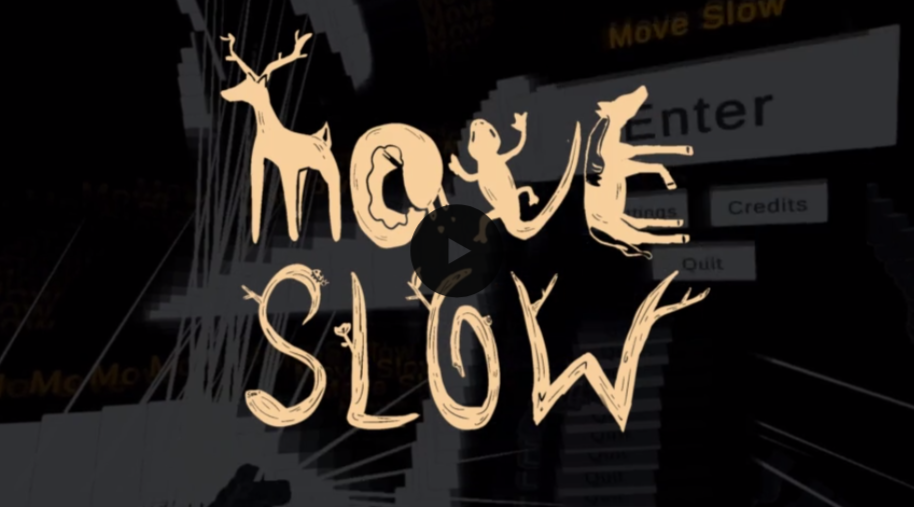
Made for the UCSC senor capstone project in ARTG/CMPM 170x, aka the last game we finished before graduating.
I was recruited by the game's original concept creator for the project as the art lead.
In the beginning, this game was meant to be an experimental, interactive art piece. Using the 2010 Kinect camera, the sensors data was sent to the game for motion detection. Depending on how much people moved around, the displayed assets and sound effects would change.
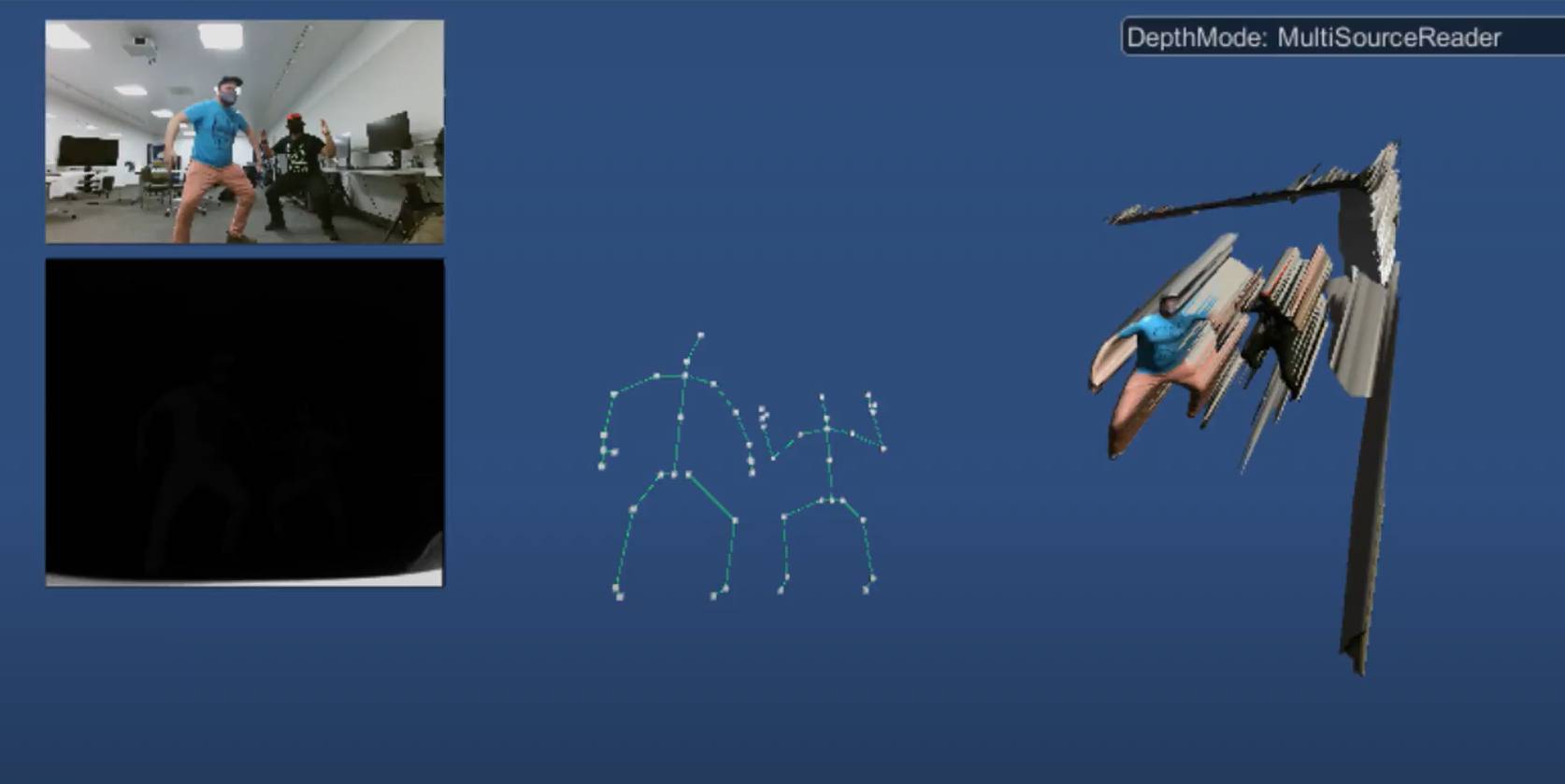 Kinect detection tests
Kinect detection tests
It was presented as a doubled-wall projection and could handle around one to five people.
This would come to be known as the 'Move Slow Kinect Prototype'. That one team who ressurected the Xbox Kinect handler with the Unity Engine.
 Move Slow Kinect Prototype
Move Slow Kinect Prototype
People were still adjusting to in-person work after coming back from the pandemic. Things got unorganized, delayed. Tasks were being done but it was unclear what should be next.
Some decided to leave, some wanted to stay.
Ultimately, an important discussion was held.
Should the project continue? If it did, what should the game look like? What would development look like?
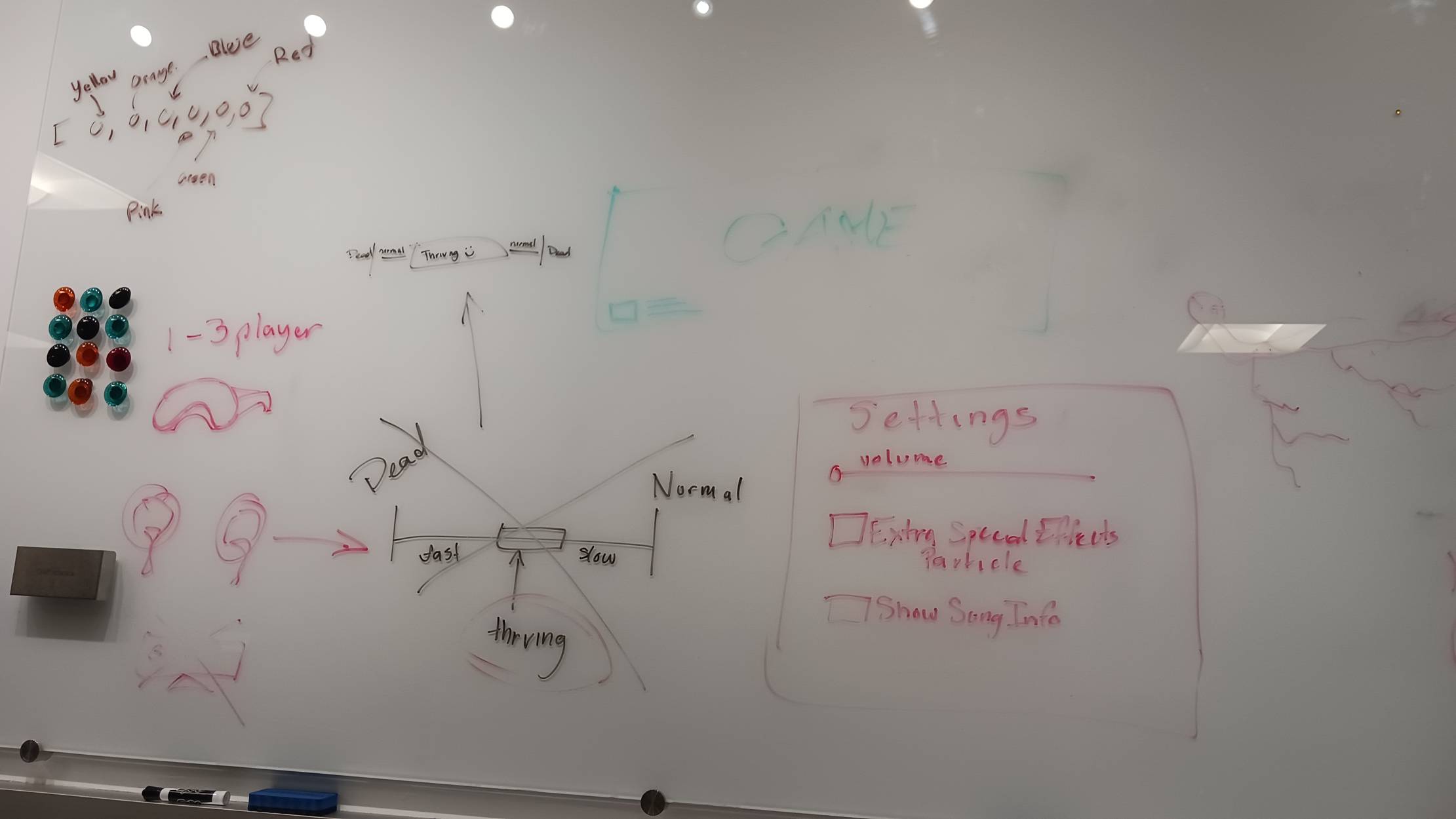 Thinking about new approaches
Thinking about new approaches
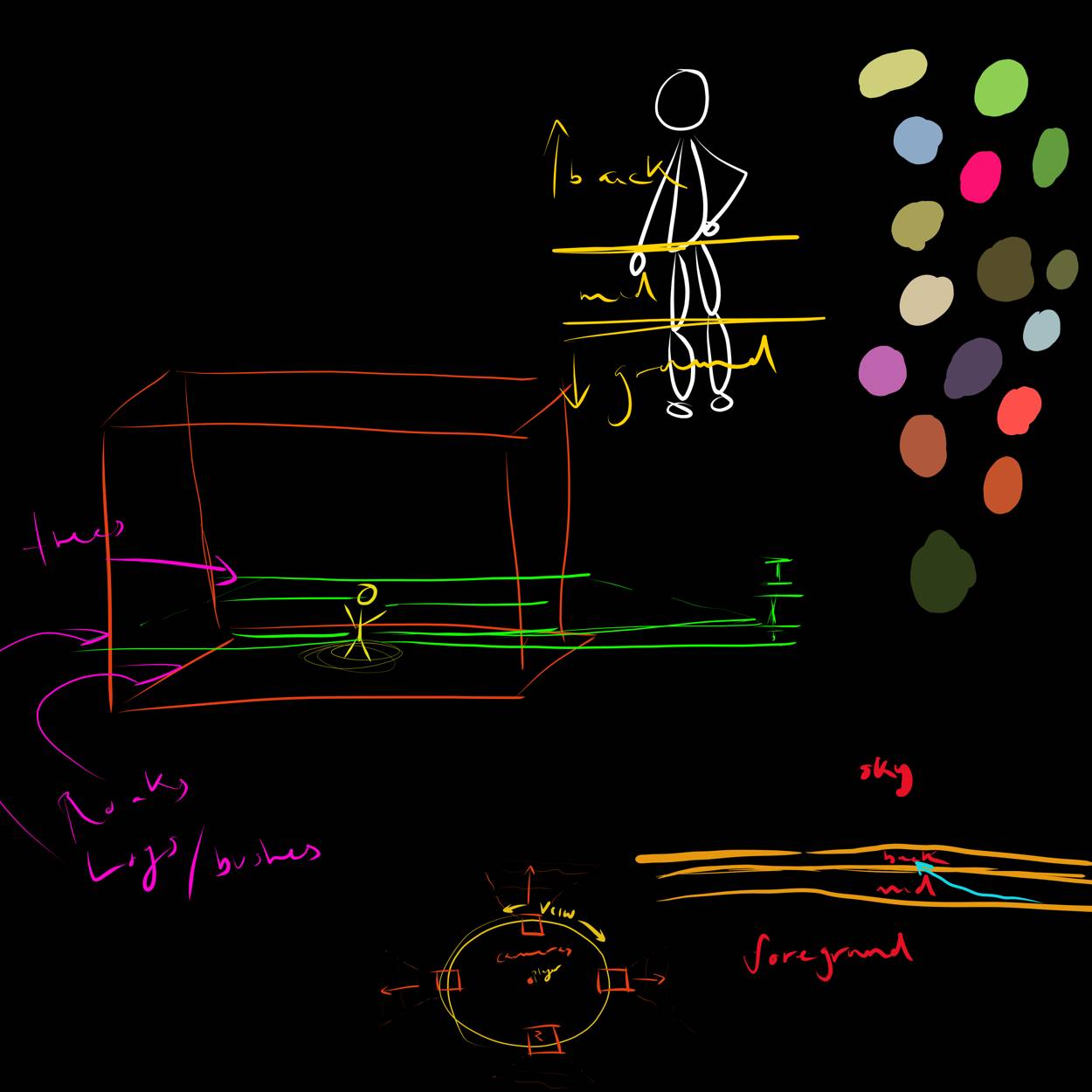
After talking it out, I asked the others if I could continue on the development as the new game lead and they agreed.
It was already in our plans to transition the software from the Kinect to VR so this partial fresh start worked in our favor. This version would come to be known as 'Move Slow VR'.
There were many production and meeting changes made in the background. My previous experience working with other game leads as an external collaborator definitely helped. We worked hard to ensure the technical side of things didn't get blown out of proportion.
We got some additional team members and focused on making incrimental VR mock-ups.
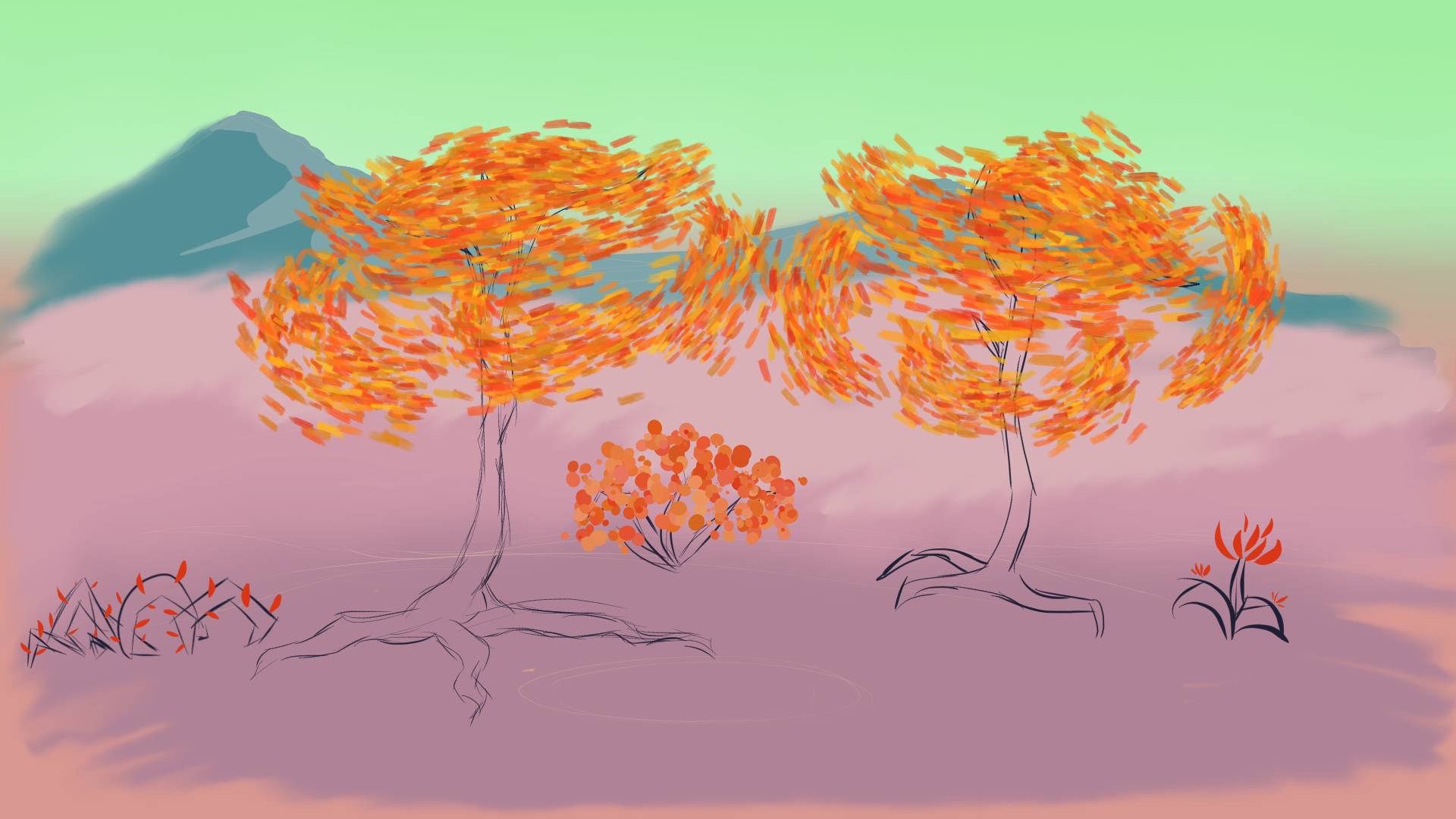
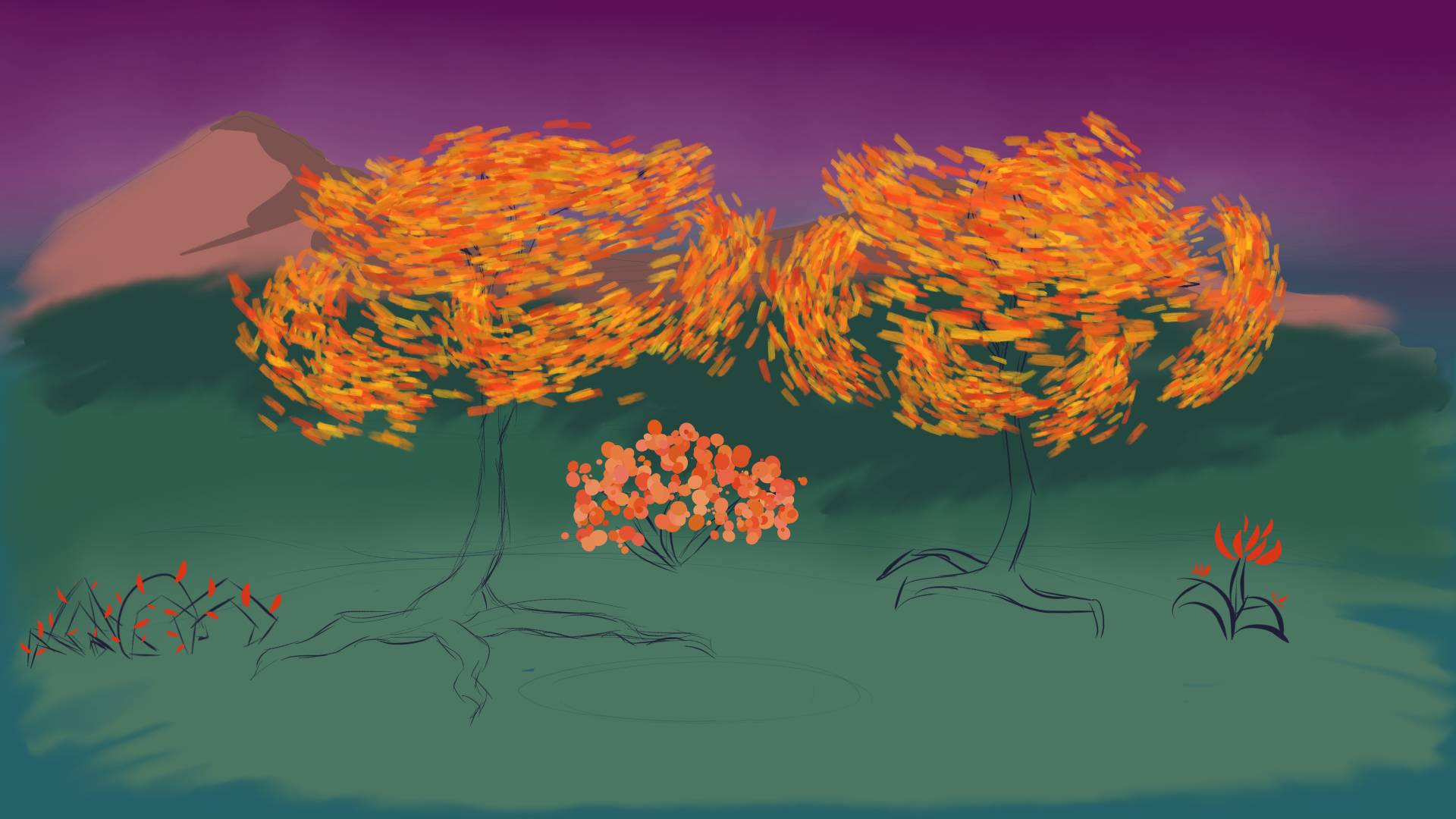 Color mock-ups
Color mock-ups
Step by step. Connecting the headset to Unity and pushing a test file that could be open. Looking at demo projects to begin custom controls and navigation. Adding in temporary flooring, the first assests. Adjusting the lighting, and connecting the data sensors to the variables.
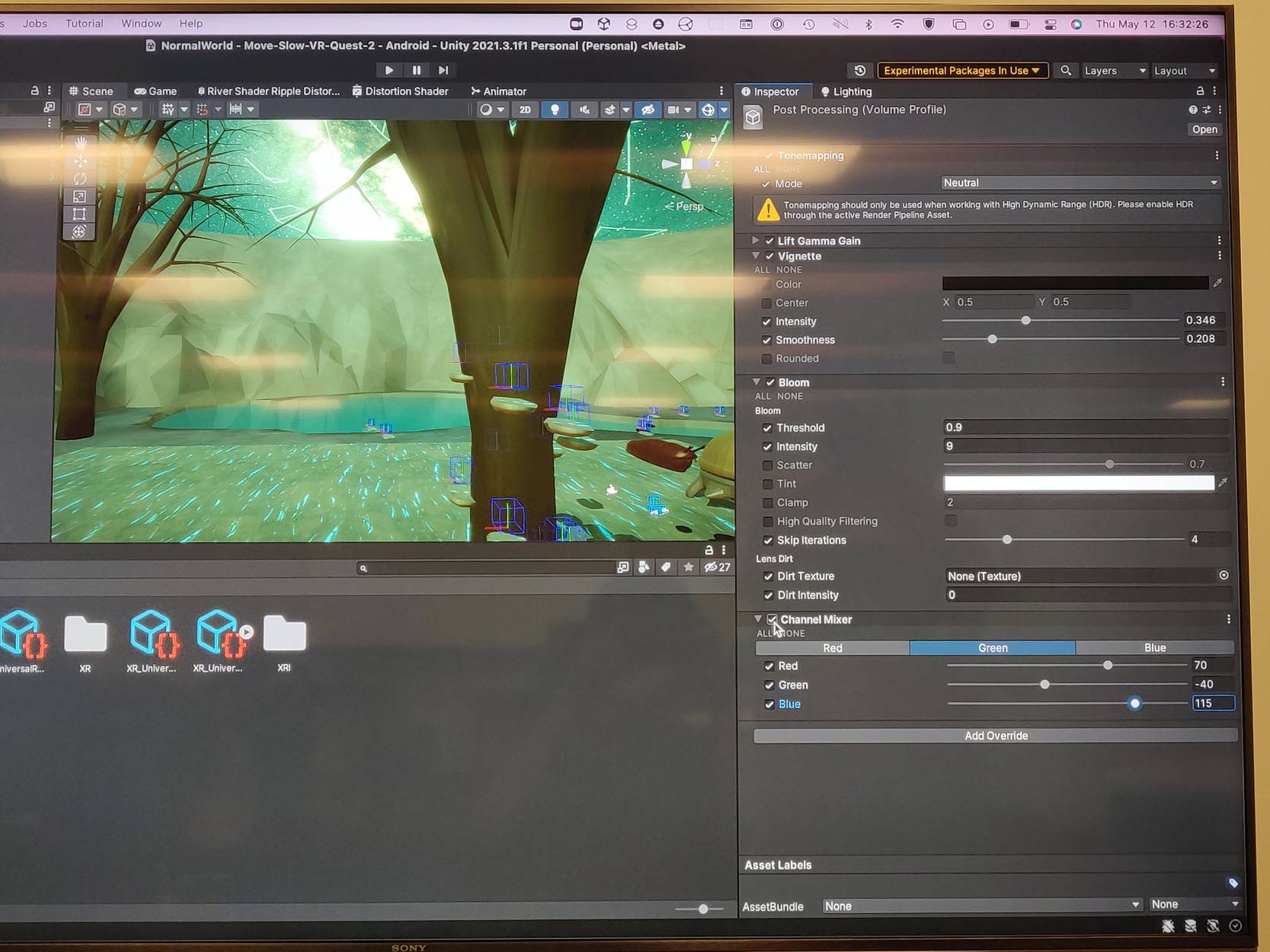
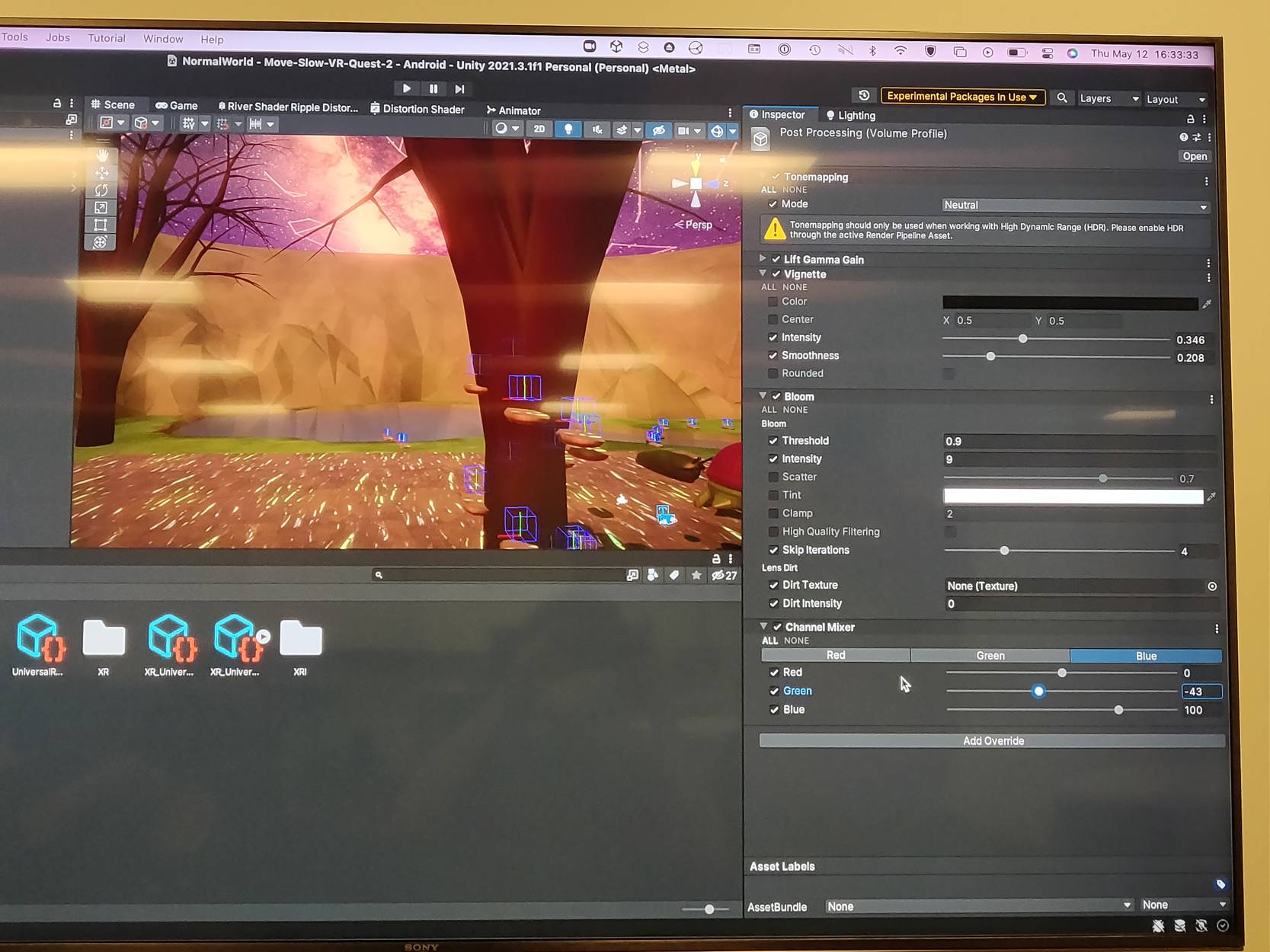 Real-time lighting test
Real-time lighting test
Fixing the controllers. Adjusting the paramaters for motion detection. Optimizing framerates during turns. Sliding in more of our favorite animals. Adding in multiple menu screens. Adjusting the motion detection. Implementing animations and landscape.
More and more incrimental changes until finally, the VR game had a stable build.
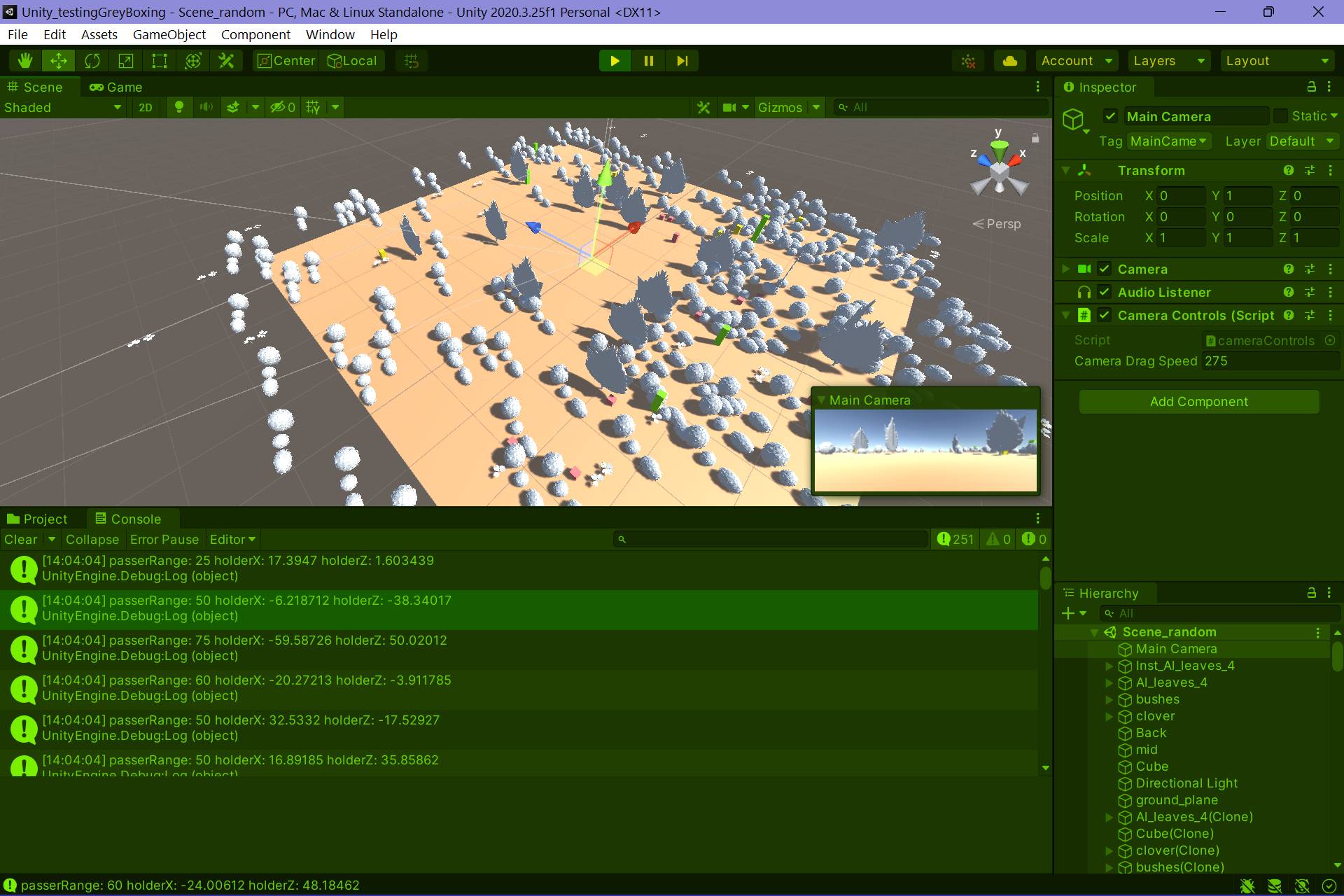 Environment generation
Environment generation
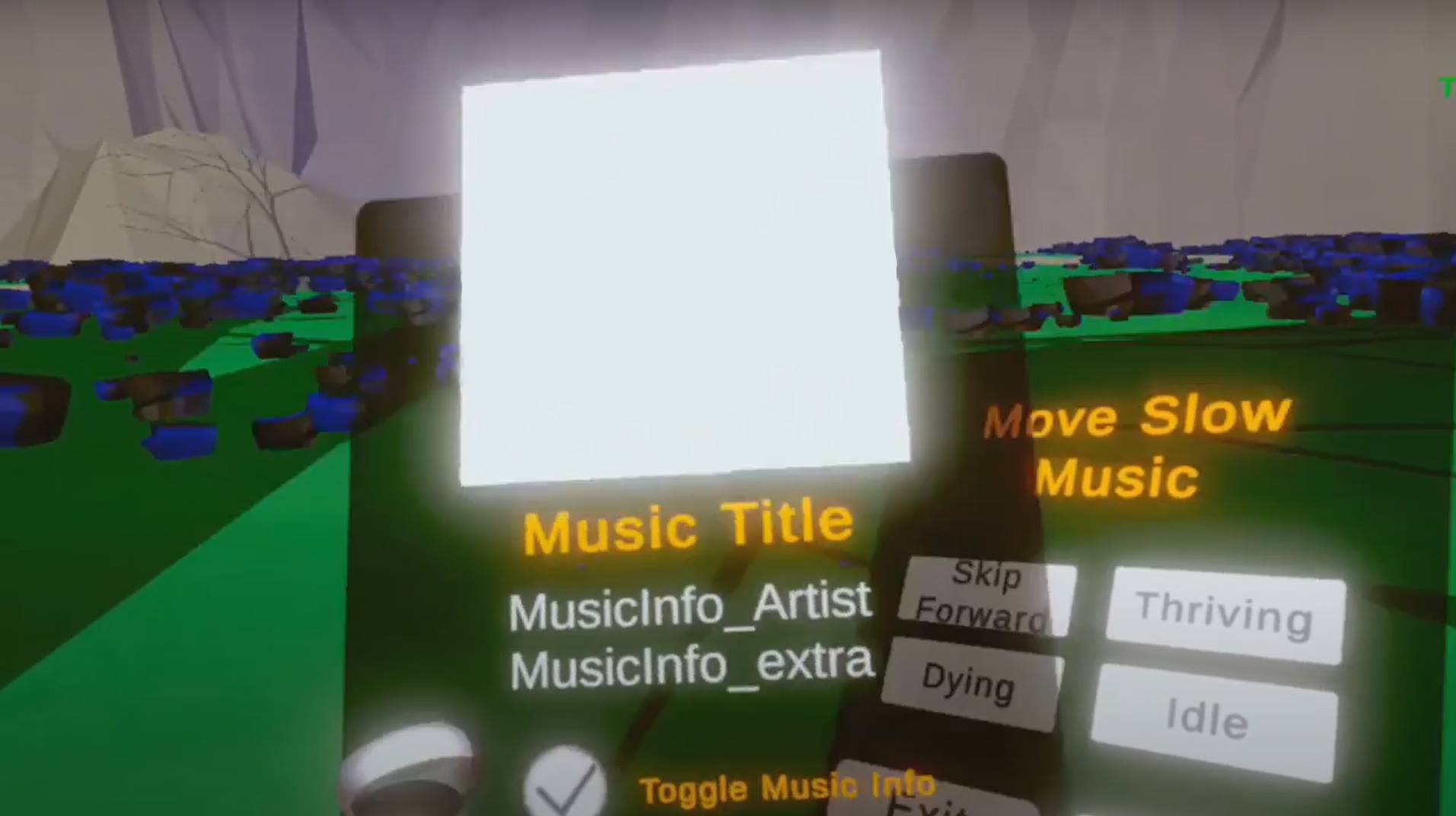 In-game VR menu
In-game VR menu
Mobile port demo
While the VR build was being polished and playtested, our lead programmer in his spare time began tinkering with a mobile prototype. And it ended up working really well (except on my phone which was half broken anyways).
We became known as that one team that had both a VR and mobile version for our game. And the kazoo playing in our trailer.
Although the experience was a bit rocky in the beginning, I am proud of everyone involved, for both the Kinect and the VR projects. For their ingenuity, technical skills, and their excitement in wanting to make a chill game. It inspired me to take my own chance at managing this project and getting it this far with everyone's hard work.
As the first time taking on the mantle of being a game lead, there was a lot I learned from it. There is definitely room for future improvement, as with any project, but the overall experience was great. I'm glad to have worked with such wonderful teammates.
- Mirs (written June 2023)